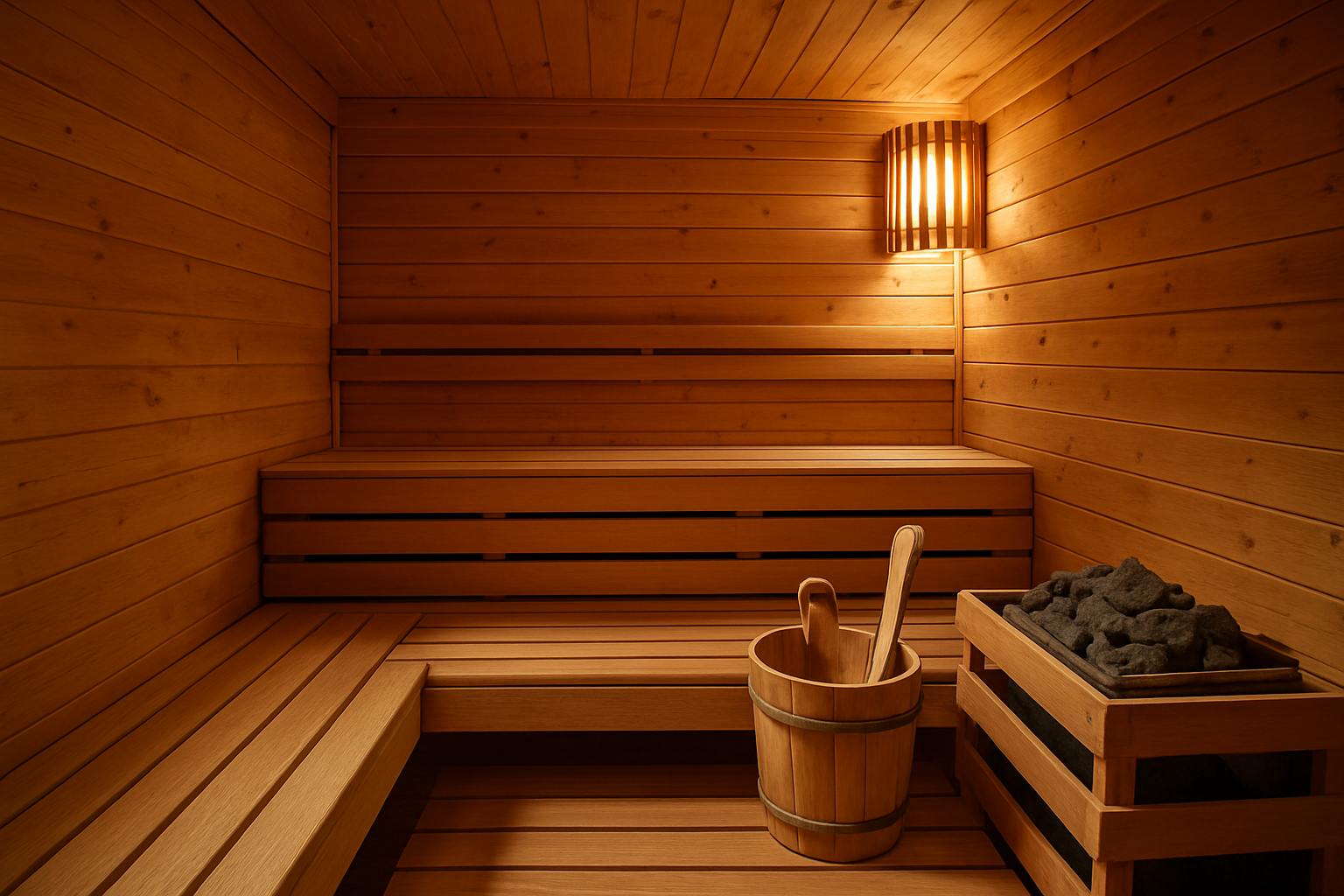The German sauna is more than just a place to relax — it is a deeply rooted cultural practice that reflects Germany’s long-standing relationship with wellness, balance, and community. While saunas are found in many parts of the world, the German sauna tradition is unique because it blends relaxation, health benefits, and social etiquette into a structured experience. For Germans, visiting a sauna is not simply about sweating; it is about cleansing the body, refreshing the mind, and embracing a tradition that has stood the test of time.
In this guide, you will discover what makes the German sauna special, how it differs from other traditions, the etiquette that is expected, and the variety of sauna experiences you may encounter across Germany. From its cultural roots to the step-by-step rituals, health benefits, and practical advice for first-time visitors, this article will help you understand and appreciate why the German sauna holds such an important place in everyday life.
The Origins and Cultural Roots of the German Sauna
The practice of sweating in heated rooms has existed for centuries, with different variations found in many cultures. In Germany, the sauna tradition evolved from influences across Europe, particularly Finland, where sauna culture has ancient roots. Over time, the German sauna developed its own identity, blending imported elements with local customs.
In the post-war period, wellness became a strong focus in Germany, leading to the popularization of saunas in public bathhouses, spas, and even small towns. Today, many Germans view sauna visits as an essential part of life, similar to exercise or nutrition. This cultural emphasis reflects the German value of “Körperpflege,” or body care, which prioritizes health, cleanliness, and well-being.
Unlike casual spa visits, the German sauna is ritualistic and tied to broader cultural values. It is not uncommon to see families, colleagues, or friends spending several hours together in saunas, sharing a social experience while respecting the rules and traditions that shape the atmosphere.
How German Saunas Differ From Other Sauna Traditions?
Saunas exist worldwide, but the German sauna has a very distinct identity. Unlike American-style saunas, which are often seen as a quick way to warm up after exercise, German saunas are organized, timed, and guided.
One of the most noticeable differences is the importance of the Aufguss, a ritual where a sauna master pours water infused with essential oils onto hot stones, releasing waves of steam. Using a towel, the heat is fanned throughout the room in a controlled manner. This creates an intense, yet refreshing experience that alternates between heat, cooling, and rest.
Another major difference is the cultural attitude toward nudity. In Germany, the sauna is a textile-free zone, meaning swimsuits are not permitted inside the sauna cabin. This is not intended to be provocative but rather hygienic and traditional. Visitors are expected to use towels for sitting or lying, and the environment is respectful, not sexualized.
These differences highlight why the German sauna is more than just physical heat — it is an immersive experience shaped by structure, respect, and shared understanding.
The Sauna Experience in Germany: Step by Step
Experiencing a German sauna follows a rhythm designed to maximize both health and relaxation. The process usually begins with a shower to cleanse the body. Cleanliness is highly valued, and showering before entering is not just polite but required.
After showering, visitors enter the sauna cabin, where they sit or lie on a towel. Sessions typically last around ten to fifteen minutes, though the exact time depends on comfort and tolerance. During this stage, heat builds in the body, leading to sweating and cleansing.
Once the session ends, the next step is cooling down. This can be done by stepping into a cold plunge pool, taking a cold shower, or even walking outside if the sauna is located near a garden or outdoor area. Cooling down is crucial because it balances circulation and enhances the overall effect.
After cooling down, relaxation is encouraged. Many sauna facilities provide quiet rooms, lounge chairs, or even fireplaces where visitors can rest, hydrate, and prepare for another round. The cycle of heating, cooling, and resting is repeated two or three times in a typical sauna visit, making the experience last several hours.
Health and Wellness Benefits of the German Sauna
The German sauna is not just about comfort; it is about promoting holistic health. The alternating heat and cooling cycles are believed to support circulation, strengthen the immune system, and encourage detoxification through sweating. Regular sauna visits are often recommended by wellness professionals as part of a balanced lifestyle.
Beyond physical benefits, the German sauna has mental health advantages. The quiet environment encourages relaxation, reduces stress, and creates a sense of calm. Many visitors describe leaving the sauna with clearer thoughts, improved mood, and deeper sleep.
Community is also part of the health aspect. Spending time in a sauna with others fosters a sense of belonging and shared well-being, reinforcing the cultural importance of connection alongside personal health.
Etiquette and Rules to Know Before Visiting
For first-time visitors, understanding sauna etiquette is essential. Germans take these rules seriously, and following them ensures comfort for everyone. The most important rule is cleanliness — always shower before entering the sauna. Towels must be used to cover the bench completely, preventing sweat from reaching the wood.
Nudity inside the sauna is mandatory, but towels or robes are used when walking in public areas. Silence is another key part of etiquette. While soft conversation is sometimes acceptable, loud talking, laughter, or phone use is not. The sauna is a place for peace, reflection, and respect.
Following the rhythm of heating, cooling, and resting is also expected. Staying too long, skipping showers, or ignoring cooling phases may disrupt the flow of the experience. By observing these customs, visitors not only show respect but also gain the full benefit of the tradition.
Types of Saunas Commonly Found in Germany
Finnish Sauna
The most traditional and widely known form, the Finnish sauna uses dry heat with high temperatures. It is often the central experience in German wellness facilities.
Bio Sauna
A milder alternative, the bio sauna combines lower heat with higher humidity. It is more comfortable for beginners and often infused with gentle aromas.
Steam Sauna
The steam sauna is a moist environment with thick steam, often enriched with herbal scents. It offers deep skin cleansing and a unique sensory experience.
Infrared Sauna
Using infrared technology, this sauna warms the body directly rather than heating the air. It provides a gentler, more targeted form of relaxation.
Salt Sauna
In a salt sauna, the air is enriched with salt particles, believed to support respiratory health and skin cleansing.
Herbal Sauna
Infused with natural herbs, this sauna combines aroma therapy with gentle heat, offering a relaxing, nature-inspired environment.
Seasonal and Regional Sauna Traditions Across Germany
Germany’s diverse regions bring their own variations to sauna culture. In the colder months, saunas often become central to social life, offering a warm refuge from winter weather. Some regions host outdoor saunas in garden cabins, where visitors can step into fresh air or even roll in snow between sessions.
In Bavaria and southern regions, saunas are often connected with Alpine traditions, where wood cabins and mountain views enhance the natural setting. In northern Germany, coastal wellness centers may combine sauna experiences with sea air, blending natural elements with traditional rituals.
These regional differences show how flexible the sauna tradition is, adapting to both local customs and seasonal rhythms while keeping its cultural essence intact.
Tips for First-Time Visitors to a German Sauna
Visiting a German sauna for the first time can feel intimidating, but with preparation, it becomes an enjoyable experience. The key is to respect the rhythm, the silence, and the customs. Arrive with time, as the process is not rushed but enjoyed slowly over several hours.
Bring essentials such as a towel large enough to cover the bench, a bathrobe for walking between areas, and slippers for comfort. Hydration is also important; drinking water before, between, and after sessions helps the body recover.
Approach the experience with an open mind. The nudity, rituals, and silence may feel unusual at first, but they are part of what makes the German sauna unique. Many first-time visitors find that once they adapt, the experience becomes not just comfortable but deeply rewarding.
Conclusion
The German sauna is more than a wellness practice; it is a cultural experience shaped by history, tradition, and community values. With its structured rhythm of heating, cooling, and resting, combined with strict yet respectful etiquette, the German sauna offers both physical and mental benefits that go far beyond simple relaxation.
For those new to the experience, understanding its roots, etiquette, and different types of saunas helps create confidence and appreciation. By approaching the tradition with respect and openness, visitors gain insight into a practice that is uniquely German yet universally enriching.
Whether enjoyed in a mountain hut in Bavaria, a seaside spa in northern Germany, or a modern wellness center in the city, the German sauna remains a tradition that connects health, culture, and community in a way that continues to inspire people from all over the world.
My name is Mustafa, and I have been blogging for over 5 years. I am passionate about sharing complete, accurate, and helpful information with my readers. Along with managing content on The Matcha Read, I also contribute blog posts to premium websites. My goal is to provide valuable insights in a clear and easy-to-understand way, so every reader walks away with useful knowledge.










